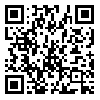BibTeX | RIS | EndNote | Medlars | ProCite | Reference Manager | RefWorks
Send citation to:
URL: http://jhsw.tums.ac.ir/article-1-5854-en.html
2- M.Sc., Department of Occupational Health Engineering, School of Public Health, Tehran University of Medical Sciences, Tehran, Iran
3- M.Sc. of Ergonomics, Department of Occupational Health Engineering, School of Public Health, Tehran University of Medical Sciences, Tehran, Iran
4- Assistant Professor, Department of Epidemiology and Biostatistics, School of Public Health, Tehran University of Medical Sciences, Tehran, Iran
5- Professor, Department of Occupational Medicine , School of Medicine, Tehran University of Medical Sciences, Tehran, Iran
Introduction: The Surgical Safety Checklist has been introduced by the World Health Organization (WHO) as a tool for reducing medical errors. Reviewing the results of the checklist application indicates significant reduction in mortality and complications in surgery. Thus, this study aimed to customize and validate surgical safety checklist in order to complying with the surgical protocol in Iran.
Material and Method: In this cross-sectional and descriptive study, the WHO Safety Surgery Checklist was first translated. Next, through interviews with specialists and direct observation of activities, those tasks that were susceptible to the incident, identified, prioritized and analyzed using Hierarchical Task Analysis (HTA) and the results presented in form of HTA charts. Then, using Tabulate Task Analysis (TTA) and based on the recommendation and modification commented by expert panel, some questions added to the checklist and a customized version of the Surgical Safety Checklist was provided. Hence, the faced validity, content validity and reliability of the checklist have been evaluated.
Result: In the surgery, four major tasks identified for analyzing using the HTA chart. Accordingly, 41 subtasks obtained and analyzed by TTA. The Lavashe method was used to determine the content validity ratio (CVR) and the content validity index (CVI). The question from the checklist, in which, CVI was less than 0.79, modified and replaced with appropriate question. Also, the scores for 3 questions were less than 0.49, and they were removed from the checklist due to the low CVR score. In the reliability assessment, the intra-observer method is used, and the Kappa coefficient obtained was acceptable and it was higher than 0.6, which confirmed the validity of the checklist.
Conclusion: In this study, the surgical safety checklist customized in terms of content validity and reliability, in a field study. Considering the compliance of the checklist items with the surgical protocol in Iran, we hope to use it to improve the quality of teamwork and reduce the complications and mortality caused by surgical errors
Received: 2018/06/22 | Accepted: 2018/06/22 | Published: 2018/06/22
| Rights and permissions | |
 |
This work is licensed under a Creative Commons Attribution-NonCommercial 4.0 International License. |





